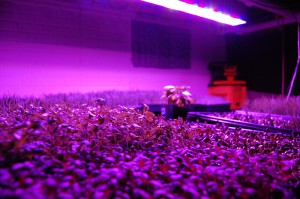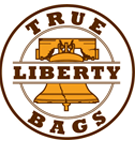 Difference between LED and HID Lights
Difference between LED and HID Lights
The article below explains different LED and HID options.
Indoor Gardening Lights With the current trend to return to a more organic lifestyle, indoor gardening has become more prolific than ever. The biggest challenge is to provide the correct hydroponic lighting to stimulate photosynthesis in plants that do not have access to sunlight. Indoor gardeners have two basic options; traditional HID lighting which includes HPS and MH lamps, and the technologically advanced LED lighting.
HID Hydroponic Systems
HID (High Intensity Discharge) lights are specially made to deliver a narrow spectrum of light, rather than the wide spectrum which produces the white light of fluorescents and incandescents. The two main types are HPS (High Pressure Sodium) and MH (Metal Halide). Both are popular, reasonably priced, come in several size options, and install essentially the same way.
The major difference between them, according to Ledke Technology Co., Ltd (http://www.ledke.com/news/LED-plant-grow-lights-compares-VS-HPS.html), is in the spectrum of light they produce. HPS lamps produce more of the yellow/orange/red spectrum. They are ideal for supplementing natural sunlight, and provide the energy plants need for fruiting and flowering. MH lamps produce more of the blue/green spectrum needed for setting seedlings, producing green leaves, and encouraging growth; also for plants that have no natural light available. Horticulturalists typically use both; MH lamps while the plants are growing and HPS lamps while they are producing.
While HID lights work very well, they have distinct disadvantages. First, systems require a ballast to moderate electricity flow, reflectors to diffuse the light, and a venting system to dissipate heat. This makes them bulky and heavy, needing a suitable hangar to suspend them over the garden. Also, each type only works for some plants by itself. For most gardens both are needed, changing from one to the other to correspond to the life cycle of the plants. Only a few systems are interchangeable; many gardeners need two complete systems instead of just one.
Their biggest drawback is their inefficiency. Only about a third of the electricity used is converted to light. The rest converts to heat, which must be dealt with. Plants transpire (just like you sweat) more profusely, and thus need more water and nutrients to thrive, than those grown in sunlight. For tender plants, chillers may be needed to protect the roots from heat damage. The room may require air conditioning, thus driving up utility costs. Their high energy consumption combined with low efficiency make them very expensive to use, and definitely not a ‘green’ production method.
Enter the new age of LED (Light-Emitting Diode) hydroponic systems. According to Growlight Express (http://www.growlightexpress.com/pages/led-grow-lights-pv-c0-1.html), NASA and other corporations have been consistently improving LED systems for horticultural use for years. Although testing has gone extremely well, these systems are just beginning to see domestic use. Still, reported results compared to HID systems are promising.
LED systems use an array of small bulbs that transmit different spectrum colors –mostly red and blue – to produce a customizable light spectrum beneficial to all plants throughout their life cycle. Many consider them superior for this reason alone, but there are other advantages.
An LED system consists only of the light display. No ballasts, reflectors, or venting is needed, so installing the system is much easier – and so is moving it when needed. Since the display is made up of dozens of bulbs instead of one, you can customize the color spectrum for the plants it is covering from seedling through harvest without changing bulbs. Some high-end systems even have a knob so you can turn off half the bulbs if you choose. This makes it easy to provide only red-spectrum or blue-spectrum light if your plants need it.
LED systems outshine HID’s in the efficiency department as well, claiming to use less than half – and as little as an eighth – of the electricity of HID’s, and last as long as fifteen years. Since very little electrical power is wasted as heat, plants thrive on less water and nutrients, thus saving you money. The room does not heat up, so utility bills are not affected. Large systems are equipped with a built-in fan to dissipate the little heat that is created.
Three main disadvantages exist. One is the upfront cost; LED systems are expensive. However, their longevity and the lowered associated costs more than make up the difference. Experts expect system costs to decline as consumer demand rises over the next few years.
A second is that consumers must make sure they are purchasing the correct LED lights. Household LED bulbs are not the same, nor will they work the same. Hydroponic bulbs are also called third generation LED’s; they emit up to fifty times more watts, and are shaped differently to project a wider beam.
In research studies, the largest factor by far in gardens that failed under LED systems was over watering. Because LED systems remain cool, plants do not transpire like they do under HID systems. Consumers who are comfortable with HID systems must learn a whole new way of feeding their plants, as indoor gardens are particularly susceptible to over watering.
Experts predict LED hydroponic systems to eventually replace traditional HPS and MH systems over the next few years, especially as even better fourth generation bulbs hit the market. As systems become more widely accessible and consumers become more comfortable with their use, indoor gardens should thrive as never before.























 © 2017
© 2017
jonjohn, January 11, 2012 9:58 pm - LED VS HID
In my experiences Hid Lighting has always produced a bigger yield… but I have to admit I was easily discouraged after my first attempt with Led Lights, so I have not done very much experimenting with Led lighting. Maybe there are tricks to growing with Leds that I don’t know yet.
Robbie K, January 12, 2012 5:53 pm - LED VS HID
LED Lights from my experience are different from each other scientifically. My advise is to follow the professionals that do the studies and test. Here’s a good LED. Apache Tech LED lights!!! NASA is using them, Stanford University bought 300 for study purposes, and the how to videos and result videos are popping up more and more over the net. Make sure to check out Apache LED.
greenbookpages, January 12, 2012 3:54 am - LED VS HID
There is much controversy over which lighting works better for indoor growing. But there general consensus is that HID lighting will produce a larger yield.